#YEEinterview: Nuclear Explained
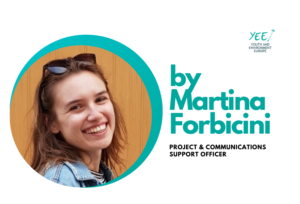 Nuclear weapons and nuclear power have critical overlaps with climate change, from releasing high amounts of carbon dioxide to the atmosphere, to destructive impact of nuclear weapons on the environment. To discuss such a complex inter-sectional issue, we had a chat with the team of Nuclear Explained, who is demystifying nuclear weapons policy on Instagram. @NuclearExplained produces engaging content simplifying policy around nuclear weapons and platforming the issue for young people by cutting through activism and policy jargon.
Nuclear weapons and nuclear power have critical overlaps with climate change, from releasing high amounts of carbon dioxide to the atmosphere, to destructive impact of nuclear weapons on the environment. To discuss such a complex inter-sectional issue, we had a chat with the team of Nuclear Explained, who is demystifying nuclear weapons policy on Instagram. @NuclearExplained produces engaging content simplifying policy around nuclear weapons and platforming the issue for young people by cutting through activism and policy jargon.
Who is the team at Nuclear Explained? Can you tell us a bit about yourself?
Nuclear Explained is run by two people – Lucy, who is a campaigns and policy worker based in London, and Bridget, who is a final-year Geography undergraduate at the University of Cambridge. Lucy works with churches with a particular focus on peace and disarmament policy/campaigns, and Bridget has been involved with the Campaign for Nuclear Disarmament as a volunteer and activist. We’re both passionate about making the world a better, more peaceful, and sustainable place.
How did you come up with the idea of Nuclear Explained?
We’d both been involved in the disarmament movement in the UK for a number of years before we started Nuclear Explained. There’s so much to love about this activism scene – the wealth of experienced activists who have been dedicated to the pursuit of peace for several decades, the radical history of the movement, and the striking graphic identity to name just a few. But we kept feeling like there was something missing.
 Youth activism is often the powerhouse of a movement. Getting young people involved in challenging the status quo can lead to a radical movement for change, as we’ve seen with the school strikes in recent months. But all too often it was clear that the youth movement for disarmament in the UK was struggling to get cut-through. There are loads of reasons for this, but one is because people just don’t know the facts about nuclear weapons. It’s not taught in schools, it’s not addressed in public discourse, and it’s often taken as a given that we have nuclear weapons.
Youth activism is often the powerhouse of a movement. Getting young people involved in challenging the status quo can lead to a radical movement for change, as we’ve seen with the school strikes in recent months. But all too often it was clear that the youth movement for disarmament in the UK was struggling to get cut-through. There are loads of reasons for this, but one is because people just don’t know the facts about nuclear weapons. It’s not taught in schools, it’s not addressed in public discourse, and it’s often taken as a given that we have nuclear weapons.
We wanted to address this and engage people our own age in this issue. So we started by setting up an Instagram account with simple explainers, actions, and information about nuclear weapons policy in the UK and further afield. Since then, we’ve been growing our team and our network, and are now in the process of setting up a formal network and campaigning body.
Can you give us an overview about the concept of Radioactive Racism? How can we tackle it?
Radioactive Racism is a term which refers to the reality that in general, the burden from various aspects of nuclear programs falls disproportionately on people of color. For example, the UK and the US have both conducted extensive nuclear tests on ex-colonial and indigenous territories, and uranium mining is overwhelmingly conducted on indigenous lands. These activities are seldom approved by local communities, and have caused many health and environmental issues for these communities.
Tackling this issue is difficult, and we shouldn’t shy away from that reality. In part, this is because historic wrongs have left long-lasting scars on indigenous land and communities which are difficult to redress. But there are some things which we can do to help.
First, write to your political representatives and ask them to put support for survivors of nuclear testing at the heart of foreign policy. This includes a financial commitment to clean-up. You can also donate to nuclear-free alliances and activists groups which are led by indigenous people – for example the Aboriginal-led Australian Nuclear-Free Alliance, and Aboriginal Heritage Action Alliance. For something based in the Marshall Islands, where the biggest nuclear test in history was carried out, check out Jo-Jikum, a non-profit supporting the next generation of Marshallese to develop environmental solutions to issues impacting their islands. If you have a platform, use it. Give projects time and space and a platform – like Hibakusha Stories, who pass down the legacy of the atomic bombings on Japan.
What’s your opinion about countries investing in Nuclear Energy and government subsidizing the industry?
Nuclear power is a really complex issue and at Nuclear Explained we’re deliberately focused on nuclear weapons rather than nuclear power. That said, we’d like to equip people with the facts to make up their own minds about the role of nuclear power in our futures.
 Nuclear weapons and nuclear power are not the same thing. Nuclear weapons are machines designed for war and destruction, whereas nuclear power is designed with energy in mind. But there are links between the two industries: there’s a huge overlap in personnel, technology, and skills. Nuclear power can be really dangerous if it goes wrong. But it can also be a source of energy that moves away from fossil fuels.
Nuclear weapons and nuclear power are not the same thing. Nuclear weapons are machines designed for war and destruction, whereas nuclear power is designed with energy in mind. But there are links between the two industries: there’s a huge overlap in personnel, technology, and skills. Nuclear power can be really dangerous if it goes wrong. But it can also be a source of energy that moves away from fossil fuels.
One of the main issues with nuclear power is that it creates radioactive waste, which hands down a massive environmental problem to the next generation. This problem is magnified in the case of accidents at nuclear power plants – which have happened in the past, more than once.
However, there are lots of people who think that nuclear power is a really good thing. The main reason? It’s a way of generating electricity that doesn’t involve using fossil fuels. If managed properly, it’s theoretically safe, renewable, and not subject to the weather like some renewables.
I think on balance we’d rather that Governments subsidized other renewables – ones which don’t create waste and don’t have a personnel/skills link with nuclear weapons. (Working in nuclear weapons and nuclear power require many of the same skills, so there is a trend of people starting working in nuclear power and then moving to weapons). But we’d like to hear what people think about this and equip them to make up their own minds.
In your opinion, which role does youth play in raising awareness about the dangers of nuclear weapons and the importance of disarmament?
The disarmament movement is absolutely brimming with amazing experience – activists who have been in the game for decades and bring experience, passion, and wisdom. But the youth voice brings something different, and it’s something we’d like to see more in the conversation about nuclear weapons.
 The recent explosion (no pun intended) in interest in climate justice has been fueled by the passion and fire of young activists. Not all of them are full-time activists – in fact, most are students at universities or schools – and this is the strength of the climate justice movement. It’s managed to get a huge range of people involved in thinking about the issue and also managed to translate this interest into widespread mobilization.
The recent explosion (no pun intended) in interest in climate justice has been fueled by the passion and fire of young activists. Not all of them are full-time activists – in fact, most are students at universities or schools – and this is the strength of the climate justice movement. It’s managed to get a huge range of people involved in thinking about the issue and also managed to translate this interest into widespread mobilization.
We’d like to see this kind of energy around disarmament activism and around anti-war activism generally. The issues of nuclear weapons/power and climate change intersect massively and you can’t address one without addressing the other.
The youth voice is more diverse than simply ‘energy and passion’. Young people are a diverse group and bring different skills and interests to activism – some are really talented pitch-writers, some are great at graphic design, some are great at public speaking… and so much more. So while the youth voice does have the potential to bring urgency, passion, and a great energy, it’s also just really great to extend the movement to so many talented people.
Which kind of reactions/feedback has Nuclear Explained received?
It’s been great to see that loads of people are interested in what we do and looking to get involved. We’ve had feedback from our disarmament activists that it’s really helped them plug a gap in understanding by explaining these issues in simple and plain terms which everyone can understand. And we’ve had feedback from people who’ve never thought about the issue before but are now passionate advocates, or just feel they understand what’s at stake for the first time.
Most of all we’re excited when people say they want to get involved or join the team. We’re actively looking to expand our offering so this is always exciting.
Nuclear weapons are a controversial issue and lots of people feel really attached to our nuclear stockpile for one reason or another. So, while the bulk of what we’ve received has been enthusiastic, we’ve also had a few robust debates with people who don’t agree with what we do. Obviously, we’d rather people agreed with us, but we’re actually just chuffed to see people engaging with the issue constructively via our stuff, rather than just ignoring the problem, as is so often the case with this issue.
What’s next for you and Nuclear Explained?
Nuclear Explained was always going to be a time-limited project in its current form. So we’re currently building next steps to keep growing the platform and getting this issue onto the map.
One way that we’re doing this is via network-building. We’re hoping to create a youth network which can also act as a campaigning body, bringing a fresh youth voice to the scene. As we mentioned we’re actively looking to grow our team, so we’d love it if people wanted to get in touch.
Which advice would you give to the young people like you who want to get more involved in the issues of intersections between climate justice and nuclear weapons abolition?
If you see something you think should be happening and it isn’t happening, set it up and make it happen. This is true of all activism. There isn’t time to wait to see if someone else will do it – just make it happen! If it’s something you’ve spotted as a gap in the market, other people will have spotted that too, and you’re already building your platform. You also don’t need to have loads of time. Writing to your MP makes a huge difference and only take ten minutes. And if you want to get involved but think you need to learn more first, you can learn about intersections between the two movements via CND’s Climate Not Trident campaign and in many other places too. But it’s usually the case that if you get stuck in, you learn on the job.
Thank you for taking part to this interview. It’s important to remember that nuclear weapons have already contributed to climate chaos such as in the case of nuclear testing. In the unlikely event of a nuclear war, climate change would be exacerbated even further: among the dreadful consequences, the nuclear winter would starve billions of people. Besides, thanks to the team for highlighting the difference between nuclear weapons and nuclear energy but still pointing out how mindful we need to be of their interrelatedness.
Good luck with your next initiative! Hopefully, Nuclear Explained will grow into a youth-led movement advocating for a more peaceful and nuclear weapons-free world.
Follow Nuclear Explained on social media
We’re just on Instagram – @nuclearexplained
Lucy’s personal Twitter where she Tweets about medievalism and nuclear weapons is @lucyjtiller



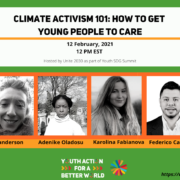
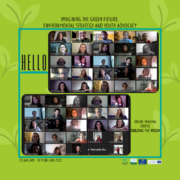
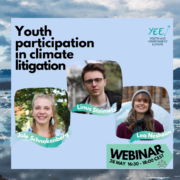
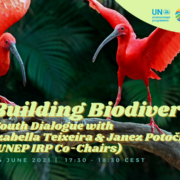
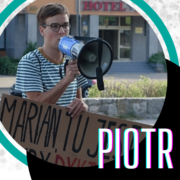

 YEE aims to unite environmental youth non-profit organisations in Europe in order to enhance international cooperation, increase knowledge about the climate crisis, raise awareness of environmental problems and to strengthen participation of youth in environmental decision-making.
YEE aims to unite environmental youth non-profit organisations in Europe in order to enhance international cooperation, increase knowledge about the climate crisis, raise awareness of environmental problems and to strengthen participation of youth in environmental decision-making.




Leave a Reply
Want to join the discussion?Feel free to contribute!